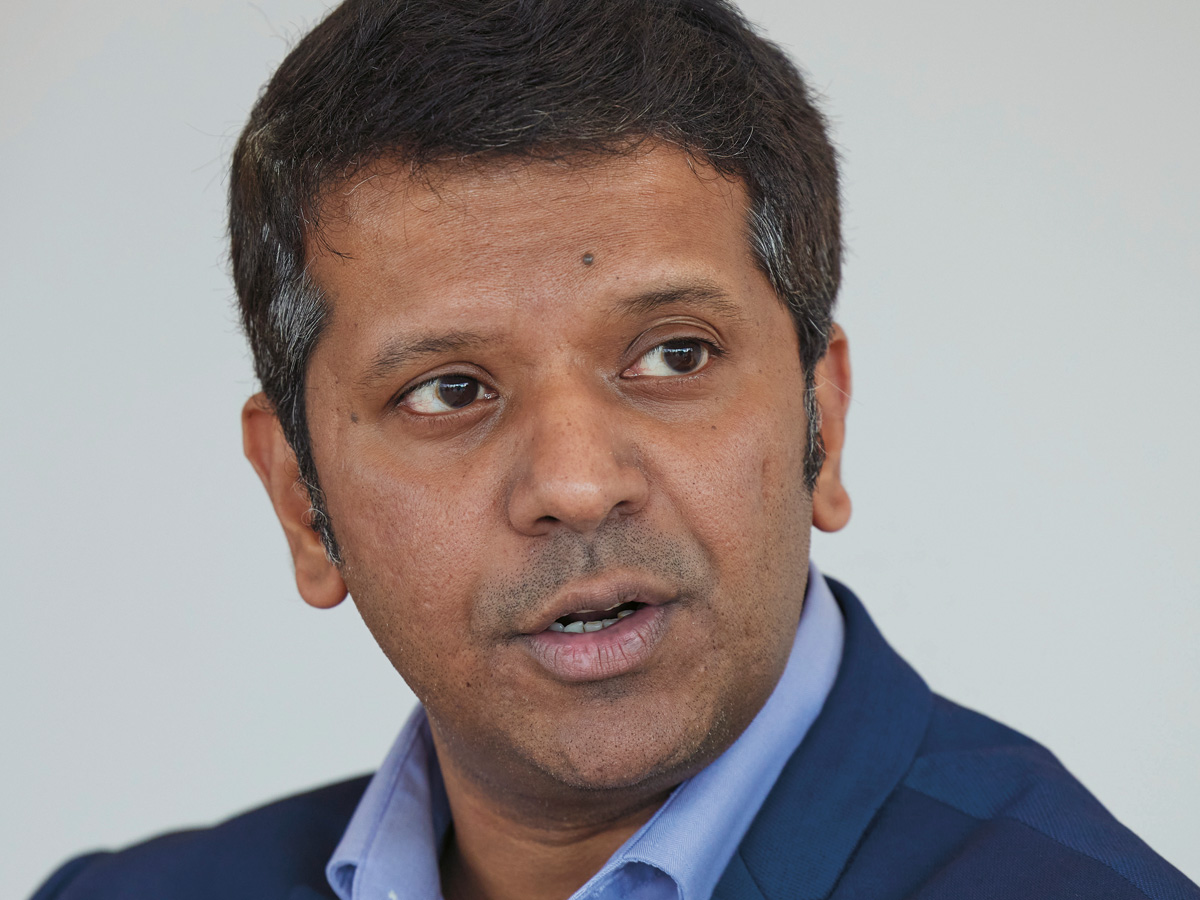Why describe responsible investing as active and universal ownership?
As a pension fund we see ourselves as real asset and universal owners. This means we recognise that through our portfolios we contribute to and own part of the economy as well as a slice of the market: what we do today should not compromise tomorrow’s outcomes.
Actions today should enhance portfolios along with the prospects of the economy and for the market as a whole. That is the starting point when we talk about Railpen’s mission to look at sustainability and universal ownership in the widest economic and market sense.
What does ESG and responsible investing mean for Railpen?
It is incorporating ESG and sustainability considerations into our investment process. It starts with the trustee’s investment beliefs, which completely incorporate ESG and climate considerations. These are essentially systemic risks across portfolios. Liabilities and governance could be classified by themes like climate change, modern slavery, responsible technologies and sustainable markets. These are themes from a top-down perspective that are incorporated into the investment process.
And we do bespoke analysis by asset class: equities, fixed income, infrastructure and all of the private markets when dealing with and incorporating sustainability.
How long has ESG been part of your overall investment approach?
It has been part of us for at least a decade. It started with being heavily focused on governance – which it still is – and then built out into more granular sustainability themes and then into the investment process.
Railpen aims to cut greenhouse gas emissions in half by 2030 and achieve net zero by 2050: how are these plans progressing?
In 2021 we set out our net-zero analysis with a roadmap of how we are going to get there. We are signatories to the Institutional Investors Group on Climate Change and use the net-zero investment framework to determine how we look at emissions across our portfolio.
The first step is looking at financed emissions. We assess how much, in terms of emissions, we are financing in our public equity and fixed income portfolios. That leads us to look at where the emissions are and where they are coming from. Then we look at the key emitters, which turned out last year to be 42 companies, to help form our net-zero engagement plan.
That means we engage with those companies to see how aligned to net zero they are and understand areas of misalignment according to our Climate Risk Net Zero Assessment Framework, which defines the different pillars for net-zero compliance. We take those areas of misalignment and that goes into our engagement and voting policy, focusing on the climate transition and how well companies are doing in these areas of misalignment.
Another side is looking at transition investments, at climate solutions. We have a real assets portfolio that invests in wind farms and solar farms.
The third part is policymaking. We are collaborative in policy initiatives, on things like climate market assessments.
Are you on track?
We are on track. We are discovering new things and challenges do arise, relating to asset class, data and policy. So, we make sure the process is robust. While it is going well, there is always room to improve.
What challenges are you facing?
There are challenges from an ecological innovation perspective. There are technologies that are untested. While they are offering a lot of promise, there are also questions of scalability.
The second set of challenges relates to the asset classes. We have asset class considerations like public equities where you have a say, there is an accountability mechanism. When you look at other asset classes like bonds and private markets, there is not the same mechanism in place.
So how do you make sure you have a voice at the table? How do make sure those mechanisms are transferred?
You use a milestone-based approach when assessing a company from an ESG perspective. How does that work?
Climate change offers a good example. It is a set of criteria on which to assess a company on its climate credentials. By setting milestones, you increase the bar as it relates to governance, data capabilities, emissions and disclosures on de-carbonisation, social impact and the just transition.
These are the pillars around which we set milestones for a company. As time goes by, the milestone bar gets higher, as we expect the company to move forward.
Has this led you to divest from a company?
We have not reached that point yet. We work through our engagements and give a clear window of time to see how much change can be effectively made by a company.
On divestment as an approach, we use exclusions as a policy across the ESG space. We exclude companies that are extremely negative from climate and ESG perspectives.
That is in some ways a form of divestment, but we believe engaging with a company can lead to better results than divesting.
Why do you believe collaboration is the best way to address change?
It is not the only way to address change, but it is an important part. There is, from an asset-owner perspective, a benefit to collaborating in terms of the universal duties that exist, especially within ESG.
There is more power in collaborative investor engagement with companies. And there is a learning process, where you often need strong scientific brain power to help, and that can be achieved best on a collaborative basis. Working with policymakers helps if you are doing so on an effective collaborative basis.
You have expanded your renewable energy investments. What is the rationale of this within your ESG mission?
This falls within the net-zero plan. This has two pillars: the de-carbonisation policy and climate investment. Within the latter there are significant attractive investment opportunities. They provide good greening opportunities for the economy as a whole, whether they be renewable energy investments or in private companies offering climate solutions.
You chair the new Institutional Investors Group on Climate Change Bondholder Stewardship Working Group. What does it aim to achieve?
Bondholders don’t have the right to vote. We can go in and provide a basis on how to improve the governance mechanism. We point to other investors who are engaging with companies and how they can see these engagements being successful. When we buy bonds from a company, we assess their green credentials.
There are other frameworks, like The Green Bond Framework, which is a sustainability bond scheme that helps align green bond standards and the EU taxonomy.
But here investors need the understanding of what is good or bad: which bond issuance is aligned with a company’s net-zero strategy. And the group provides a best practice framework for investors to assess what is a good sustainable bond and how to differentiate. This structure will help all asset owners.
What are your priorities throughout the year to address the ESG issues in your portfolios?
In terms of climate, we are moving on with the climate transition, determining what is a good transition plan, what is credible.
We are looking at financial disclosures as the Task Force on Climate-related Financial Disclosures kicks in, to use that as a framework in our investment processes. We also have our workforce disclosure project, which is part of the ESG agenda.
What did you make of COP27?
A lot of headlines suggested it was not that successful, and I would agree. It felt like a letdown for a lot of investors, but there was some credibility there. It wasn’t about high-level announcements or commitments. It was more a check on how we are doing on the climate front, which for me was real and credible.
It was underwhelming from a financial sector perspective, but more credible from a hands on, ‘how are we doing’, ‘what do we need to do more of’ position.
What do you hope for from COP28?
We have a lot of the guidance, frameworks, tools and policies in place. It is now about implementing it all. It may sound mundane, it is hardly headline grabbing, but a ‘let’s get to work, let’s get things done’ approach is needed now.
In that context, where is the investment world in terms of dealing with climate change and the other ESG challenges? It is behind where it should be?
Saying we are behind is about expectations. What I would say is, where we are as an ecosystem, between investors, government, policymakers, data providers and NGOs, is that for the first time they are all aligned and engaged in the same mission. That is a huge positive. Investors need to leverage o this and move forward. There is now a lot of support to address climate change as an issue.
Do you hear much scepticism around climate change within the investment world?
I wouldn’t say scepticism to climate change itself. That is a thing of the past. But there is scepticism around certain things, which is more to do with the devil in the detail. Things like questioning if we are doing things right. Are we doing what we are saying we are? Do we understand the technologies?
These detailed discussions are becoming more and more important. It is positive, as it is evidence that we are making progress, but we should maintain those high standards.
What are the biggest challenges you face as a pension fund in addressing the whole range of ESG challenges?
We are fortunate as a pension fund, from trustee and management perspectives, that we believe in co-operation when dealing with systemic risks. It is, though, an educational process. An understanding of what it all means for our portfolios. That isn’t an insurmountable challenge. It is more about contextualizing things. So, when we talk about ESG and climate you can contextualise it for all the stakeholders. But it can be challenging.





Comments